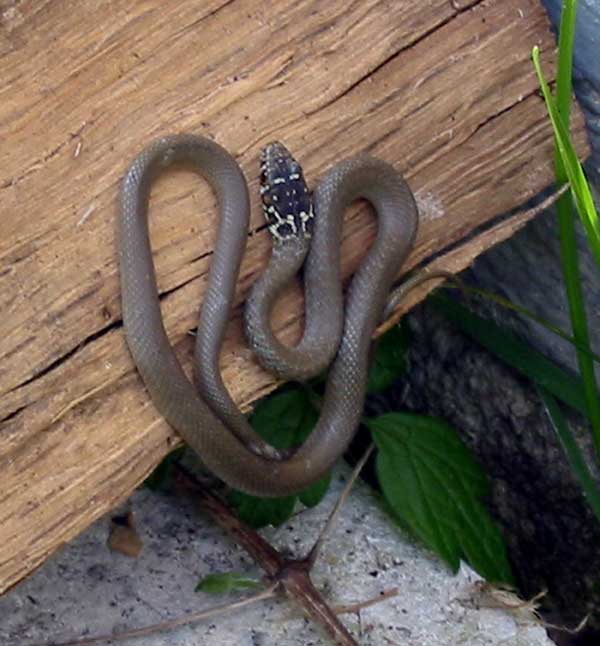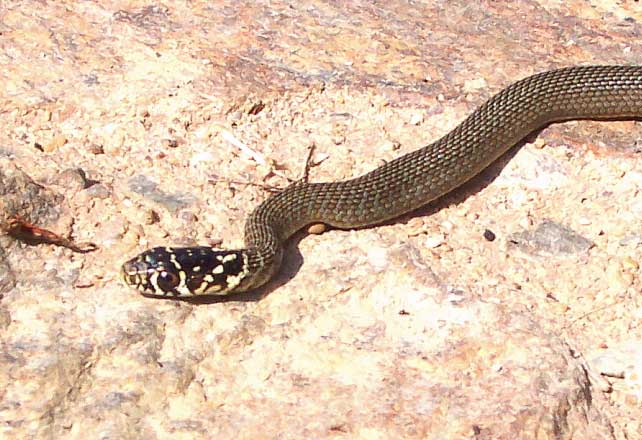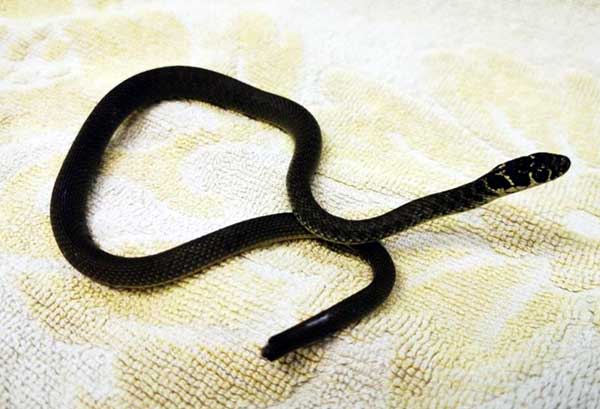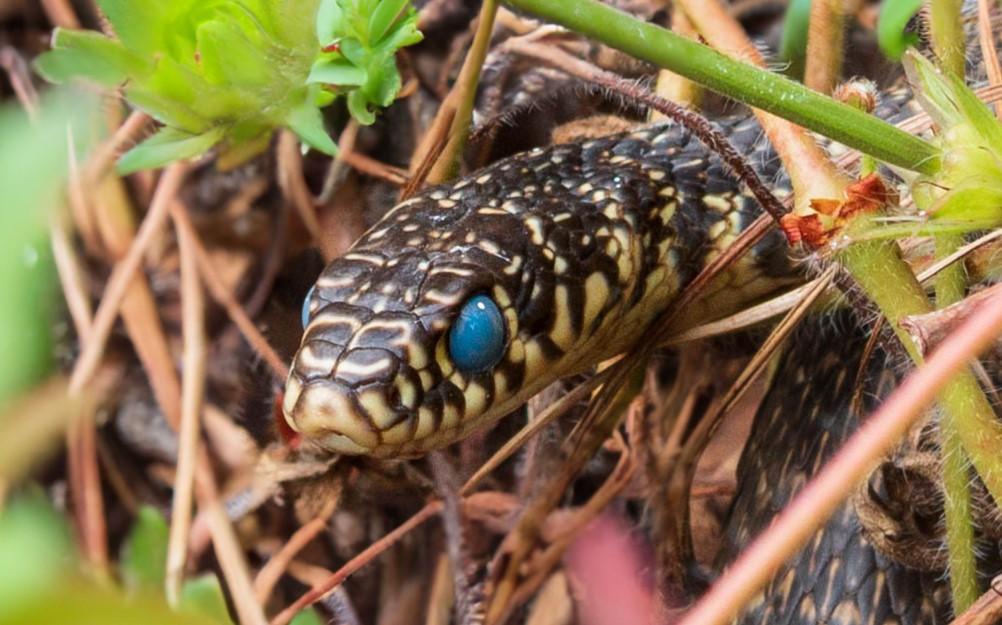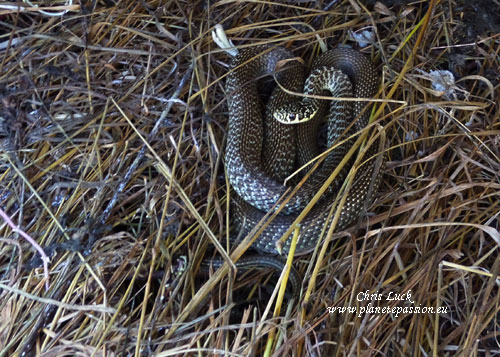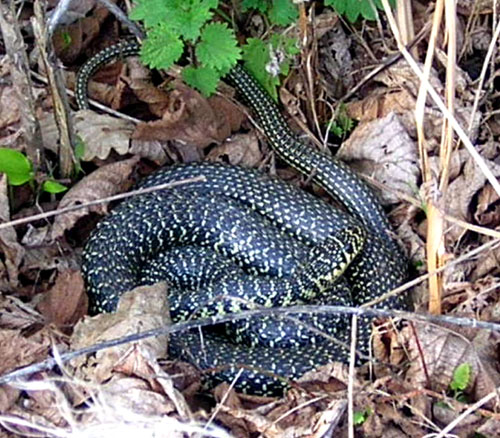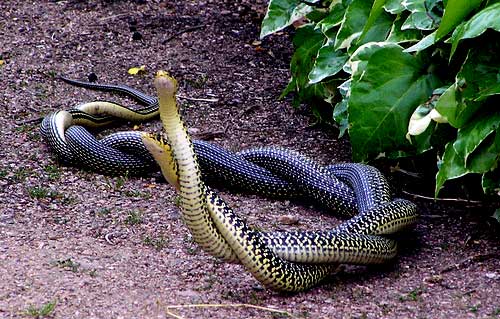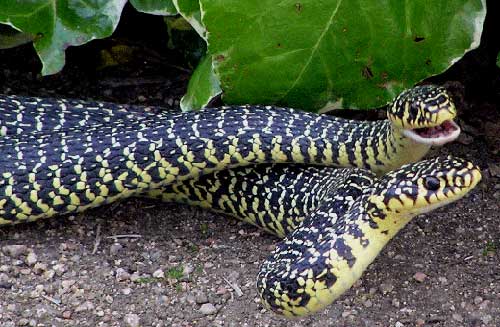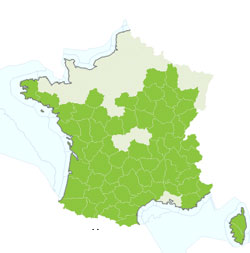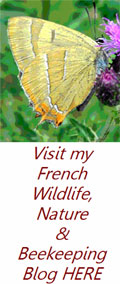Western whip snake
Hierophis viridiflavus
(Previously Coluber viridiflavus)
Couleuvre verte et jaune
The Western whip snake is present in the southern three quarters of France
and they are difficult to confuse with any other snake in this country. As their French name implies they are predominantly dark green with yellow dashes or bands which are transverse on the main part of their body and are longitudinal towards the tail, although as can be seen in the photos various forms exist depending on the stage of development with young snakes up to about 45cm being a grey / brown with a marbled head. Growing to as much as 2 metres they can be large snakes when mature with prominent eyes and round pupils.
They occupy all types of habitat
They are a powerful snake
When snakes are about to shed their skin their eyes appear blue or milky as the skin that covers them becomes detached - they don't have eyelids.
Hibernation generally takes place from October until April
using underground cavities, low cavities in or under trees and stumps, beneath stone walls etc. The period of hibernation is variable and is temperature driven meaning that they can be active in late winter in some regions on warmer sunny days.
Coupling takes place in May and can result in violent fights between males for a female, this can also occur between the sexes. During copulation the partners roll and twist themselves around each other, keeping their heads raised upright. Between 5 and 20 eggs are deposited under stones, old tree stumps or in rotting vegetation in June/July, the young hatching 6 to 8 weeks later.
All French snakes benefit from full protected status
They are locally threatened by a high accidental mortality on roads, especially close to urban or tourist areas, but this is not considered to be a major threat to the species overall. They are also persecuted throughout their range despite this being illegal because people mistakenly believe them to be venomous.
